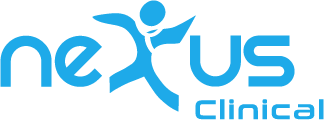
Enhanced EHR Usability: Advancing Patient Safety
- EHR has completely transformed the healthcare industry, and in upcoming times we can see some big changes in it too. It would be absolutely accurate to say that it is a digital alternative to traditional paper records. Today, EHR has become an essential part of healthcare providers' lives as it allows healthcare providers to access accurate and up-to-date patient information at any time.
Enhanced EHR Usability: Advancing Patient Safety
- EHR has completely transformed the healthcare industry, and in upcoming times we can see some big changes in it too. It would be absolutely accurate to say that it is a digital alternative to traditional paper records. Today, EHR has become an essential part of healthcare providers' lives as it allows healthcare providers to access accurate and up-to-date patient information at any time.

However, the usability of EHR impacts both patient safety and the efficiency of healthcare providers. EHR usability refers to how effectively, efficiently, and satisfactorily a healthcare professional is using a system. An easy-to-use EHR system provides better patient care and safety whereas a complex EHR system can produce severe consequences.
Due to importance of the usability and patient safety ONC certifications for EHR software have criteria for safety-enhanced design which are required to be cleared by all participating EHRs.
Poor EHR Usability and its Consequences
We call the usability of an EHR system poor when it causes many difficulties and challenges to clinicians while using it. These challenges can range from complex interfaces, and inefficient workflows to inadequate system support.
The consequences of poor EHR usability are profound and multifaceted:
| Issue | Impact |
| Patient Safety | Medication errors, delayed diagnosis |
| Clinician Efficiency | Increased documentation time, reduced patient interaction |
| Clinician Satisfaction | Frustration, burnout, decreased job satisfaction |
1. Patient Safety
The most critical issue of a poor EHR is the potential for medication errors. If the EHR system is not designed properly then it can show incorrect medication orders which can lead to delay in diagnosis and can even cost the life of the patient.
2. Clinician Efficiency
An inefficient EHR system can reduce the efficiency of clinicians. The documentation takes 10 minutes to complete, with a poorly designed EHR it can take up to 1 hour, leaving all of the clinicians’ time spent preparing documentation and reducing the time they can spend with patients.
3. Clinician Satisfaction
Frustration with clunky, non-intuitive EHR systems can lead to decreased job satisfaction among healthcare providers. When clinicians are dissatisfied with their tools, it affects their overall performance and the quality of patient care they can provide.
Recommendations for Improving EHR Usability
To address these issues, the American Medical Informatics Association (AMIA) Board of Directors has provided several recommendations:
| Recommendation | Explanation |
| Involving Clinicians in Design | Engage clinicians in the EHR design process to ensure the system meets their needs and workflows. |
| Developing User-Centered Systems | Focus on intuitive interfaces, minimize clicks, and ensure information is easily accessible. |
| Ongoing Training and Support | Provide continuous training and reliable support to keep clinicians updated and resolve issues quickly. |
1. Involving Clinicians in Design
If clinicians are actively involved during the design and development of the EHR, they will see how the entire system works. Their firsthand experience and insights are invaluable in creating systems that meet their needs and workflows. If the process of design and development is collaborative then clinicians will be able to detect usability issues at early stages by testing them and eliminating them at the same time.
2. Developing User-Centered Systems
EHR systems should always be developed keeping the end user in mind. It must be simple enough that both patients and healthcare providers can use it easily. For this, its user interface should be intuitive, minimum clicks should be required to get the desired information, and whatever information the patient and healthcare provider needs should be available within seconds. Overall, using the EHR system should be simplified and natural without the complex options.
3. Ongoing Training and Support
Continuous training and support are essential for maximizing the benefits of EHR systems. Regular training sessions should be there to help clinicians stay updated on new and updated features and best practices. Along with that, having a reliable support system ensures that any issues should be quickly addressed, minimizing disruptions in clinical workflows.
Benefits of Improved EHR Usability
1. Improved Patient Safety
The better the EHR system is designed, the lower the chances of errors occurring. And the fewer errors, the safer patient care. The interface of EHR is most important, it helps the clinicians to accurately enter and retrieve any patient information.
2. Increased Clinician Efficiency
A simplified EHR system makes the work of clinicians much easier, especially in terms of documentation. The less time spent on documentation, the more time the clinician can devote to the patient and the process will move forward with a smoother workflow that will increase both productivity and job satisfaction.
3. Enhanced Clinician Satisfaction
When clinicians are provided with tools that make their workflow smoother, their job satisfaction increases. The more satisfied healthcare providers are, the more high-quality patient care they will provide and the more successful they will be.
4. Potential Financial Benefits
Reducing errors and improving efficiency can lead to significant cost savings for healthcare organizations. Fewer errors mean lower costs associated with correcting mistakes, and increased efficiency can result in better resource utilization and reduced operational costs.
Conclusion
It is essential to enhance EHR usability to improve healthcare delivery and take patient safety to an advanced level. A poor EHR can ruin the entire process, whereas an EHR created with advanced technology can transform the whole process.
If you want to create an EHR environment where both the healthcare provider and the patient focus on healthcare and not worry about issues of accuracy or reliability, you should consider Nexus EHR in your office today. Nexus EHR is ONC certified including safety-enhanced design criteria. Its simple and easy-to-use interface helps providers to handle patient care documentation efficiently and without any safety concerns.
For more details and a demo of our EHR, you can contact us.





